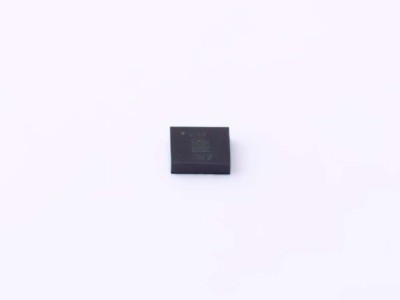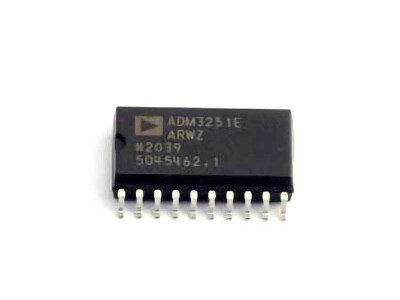
Introduction to STM32F103R8T6 and Common Issues
The STM32F103 R8T6 is a popular microcontroller from STMicroelectronics, part of the STM32 family. Featuring a 32-bit ARM Cortex-M3 core, it is highly favored for its Power efficiency, processing capability, and ease of integration into embedded systems. Whether you're building a simple sensor interface , a Communication device, or a complex industrial controller, the STM32F103R8T6 is versatile enough to meet a variety of needs.
Despite its strengths, users often encounter challenges during the development phase. These issues can range from simple configuration errors to more complex hardware malfunctions. In this article, we explore common problems faced by developers and offer practical solutions to resolve them efficiently.
1. Power Supply Issues
One of the most frequent problems with embedded systems using STM32F103R8T6 is power-related issues. A consistent power supply is crucial for the reliable operation of the microcontroller. Voltage irregularities, fluctuations, or an inadequate power source can lead to a variety of issues, including system resets, erratic behavior, or complete failure to boot.
Solution:
To mitigate power supply issues:
Ensure that the input voltage to the microcontroller is stable and within the recommended range (2.0V to 3.6V).
Use a low-dropout regulator (LDO) if you're working with a battery or a low-voltage supply to ensure consistent voltage.
Check for noisy power lines and use decoupling capacitor s (100nF and 10µF) close to the microcontroller's power pins to filter out high-frequency noise.
2. Incorrect Clock Configuration
The STM32F103R8T6 microcontroller uses different clock sources, such as external crystals or internal oscillators. Incorrect clock configuration is a common cause of failure to initialize or enter certain operating modes, leading to issues like a non-responsive system or a device that fails to communicate with peripherals.
Solution:
Ensure the correct clock source is selected in the firmware configuration.
Double-check the startup code and ensure the clock configuration (such as PLL, HSE, and LSE settings) is correct.
If you're using an external crystal, verify the oscillator components, such as capacitors and resistors, and ensure that the crystal is properly rated for the microcontroller.
3. Bootloader and Flash Programming Issues
The STM32F103R8T6 supports bootloading, a process where the microcontroller loads a program from a specific location in Memory , typically the flash. If there's an issue with the bootloader or incorrect flash memory settings, the microcontroller may fail to boot the application or could even become "bricked."
Solution:
Double-check that the flash memory is properly programmed and that the bootloader address is correctly configured.
Use an external debugger, such as ST-Link, to check for flash programming issues and to reprogram the microcontroller if necessary.
If the microcontroller becomes unresponsive, try using the "System Memory Boot Mode" by connecting the BOOT0 pin to VDD to initiate bootloading.
4. Peripheral Communication Failures
The STM32F103R8T6 offers multiple communication interfaces such as USART, SPI, and I2C. Common problems developers face include failure to communicate with external devices or peripherals due to incorrect initialization, mismatched baud rates, or misconfigured pins.
Solution:
Double-check peripheral initialization code to ensure correct settings (e.g., baud rate, data bits, stop bits for UART).
Verify that the correct pins are configured as per the microcontroller's datasheet and that alternate functions (AF) are properly mapped to the corresponding pins.
Use an oscilloscope or logic analyzer to verify signal integrity and ensure proper data transmission.
5. Software Bugs and Firmware Errors
Software bugs and firmware errors are another frequent source of problems. Developers may encounter issues with non-responsive code, incorrect execution, or unexpected crashes due to incorrect programming or improper handling of interrupts, memory allocation, or peripheral configurations.
Solution:
Use a debugger (e.g., ST-Link or J-Link) to step through the code and identify any runtime errors or issues.
Make sure all interrupt vectors are correctly implemented and that the interrupt priority levels are properly set.
Review memory usage and ensure that the stack, heap, and other memory allocations are properly handled.
Advanced Troubleshooting and Solutions
Once you’ve resolved the basic issues, more complex troubleshooting steps may be needed, especially when working with high-speed peripherals or advanced configurations. Here, we look into advanced solutions for some of the trickier problems developers might face.
1. Reset and Brown-Out Problems
The STM32F103R8T6 includes brown-out reset (BOR) functionality, which can reset the device when the supply voltage dips below a certain threshold. However, improperly configured BOR settings can lead to unexpected resets during normal operation or failure to reset when voltage drops.
Solution:
Review and adjust the brown-out reset threshold settings using the BOR Level configuration in the STM32CubeMX tool.
If the device frequently resets due to slight voltage fluctuations, increase the threshold or disable the BOR feature if appropriate.
Consider adding external voltage monitoring circuitry if you're working with an unstable power source.
2. Watchdog Timer (WDT) Failures
The independent watchdog timer (IWDG) and window watchdog timer (WWDG) are useful for ensuring system stability by resetting the microcontroller in the event of a software lockup. However, improper configuration or failure to regularly reset the watchdog can cause unexpected resets or "watchdog resets."
Solution:
Ensure that the watchdog timers are configured correctly, with appropriate timeout values and conditions for resetting.
Regularly reset the watchdog timer within your code to prevent unintentional resets.
Consider using the IWDG for critical tasks and WWDG for non-critical operations where higher timing tolerance is acceptable.
3. Memory Corruption and Stack Overflow
Memory corruption, especially from a stack overflow, is a critical issue that can lead to system crashes, unexpected behavior, or data corruption. This is often caused by poor memory management, such as improper allocation or failure to handle interrupts correctly.
Solution:
Use tools such as stack overflow protection mechanisms and enable compiler options like stack checking.
Carefully review interrupt service routines (ISRs) to ensure they do not interfere with other critical parts of your application.
Use the STM32's internal memory protection unit (MPU) to prevent access to unallocated memory regions.
4. Debugging Complex Interactions
When dealing with multiple peripherals or complex interactions between the microcontroller and external devices, debugging can become difficult. Issues like signal degradation, timing mismatches, or peripheral conflicts may not be immediately apparent.
Solution:
Use a logic analyzer or oscilloscope to monitor signal integrity, especially for high-speed interfaces like SPI or I2C.
Break down the system into smaller module s to isolate the problem area, and systematically test each peripheral.
Leverage STM32CubeMX for peripheral configuration to ensure that settings do not conflict, especially when using peripherals in shared modes (e.g., UART and SPI on the same pins).
5. Handling External Components ( Sensors , Actuators, etc.)
External sensors and actuators connected to the STM32F103R8T6 can sometimes introduce errors if they are not wired or configured properly. Incorrect sensor readings, failure to respond, or misbehaving actuators are common problems.
Solution:
Ensure that all sensors and actuators are powered correctly and that their communication protocols are fully compatible with the STM32.
Test peripherals with simple, isolated code before integrating them into more complex systems.
When using analog sensors, ensure proper calibration and use of ADCs with appropriate reference voltages.
Conclusion
Troubleshooting the STM32F103R8T6 microcontroller requires a methodical approach, attention to detail, and familiarity with both hardware and software aspects of embedded systems. By following the solutions outlined in this article, developers can address the most common issues and ensure stable and reliable operation of their systems. Whether you're dealing with power supply problems, clock configurations, peripheral communication failures, or complex software bugs, understanding the root cause of each issue and applying the right solution will significantly improve your development experience.
Partnering with an electronic components supplier sets your team up for success, ensuring the design, production, and procurement processes are quality and error-free.

